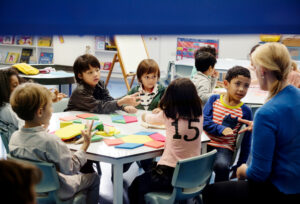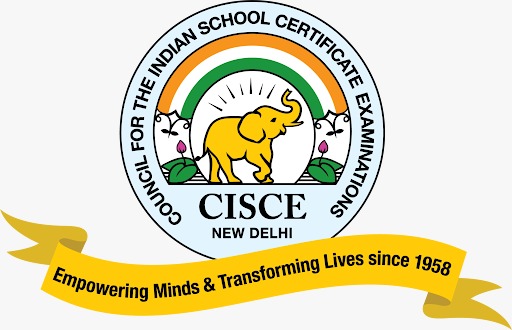Story writing is a fantastic way for students to explore their creativity, improve their language skills, and express their thoughts in an engaging manner. Whether it’s a fictional tale or a narrative based on real-life events, mastering the art of story writing can be incredibly beneficial for students. It enhances their ability to organize thoughts, develop logical sequences, and convey emotions effectively. Additionally, it nurtures empathy as students create and understand different characters’ perspectives. A well-crafted story not only entertains readers but also leaves them with a lasting impression or a valuable lesson.
What is Story Writing?
Story writing involves crafting a narrative with characters, a plot, and a setting that engages readers. It can be a fictional tale or a real-life story, but the key objective is to captivate the reader’s attention and convey a meaningful message or experience. A good story transports readers to another world, immersing them in the lives of the characters and the events that unfold.
Key Elements of a Good Story
To write an effective story, students must include several key components that form the backbone of any narrative. These elements work together to create a cohesive and compelling tale.
1. Characters
Characters are the people, animals, or beings that drive the story. A well-developed character should have distinct traits, motivations, and emotions.
Example: A brave protagonist embarking on a dangerous quest or a mischievous child causing chaos in the neighborhood.
2. Setting
The setting establishes the time and place where the story unfolds. It helps readers visualize the world and feel immersed in the narrative.
Example: A futuristic city, a medieval castle, or a quiet countryside.
3. Plot
The plot is the sequence of events that make up the story. It typically follows a structure of beginning, middle, and end.
Example: A young detective solving a mystery or a family overcoming a natural disaster.
4. Conflict
Conflict is the central problem or challenge that the protagonist faces. Without conflict, a story can feel flat and uninteresting.
Types of conflict:
- Person vs. Person
- Person vs. Nature
- Person vs. Society
- Person vs. Self
5. Resolution
The resolution is the conclusion of the story, where the conflict is resolved, and loose ends are tied up.
Example: The hero defeats the villain and restores peace to the kingdom.
Step-By-Step Guide to Writing a Story
Follow these simple steps to write a compelling story:
Step 1: Brainstorm Ideas
Start by jotting down different ideas for your story. Think about interesting characters, exciting settings, and potential conflicts.
Tip: Use a mind map to organize your ideas visually.
Step 2: Create an Outline
An outline helps you organize your story and ensures that it has a logical flow. A basic outline includes:
- Introduction: Introduce the characters and setting.
- Rising Action: Build tension and introduce the conflict.
- Climax: The most intense or exciting part of the story.
- Falling Action: Show how the conflict is being resolved.
- Conclusion: End the story with a satisfying resolution.
Step 3: Write a Strong Opening
A captivating opening draws readers into the story right away. Start with an intriguing event, a question, or a vivid description.
Example: “It was a dark and stormy night, and Alex had no idea that his life was about to change forever.”
Step 4: Develop the Characters
Give depth to your characters by describing their appearance, thoughts, feelings, and actions. Make them relatable by adding flaws or unique traits.
Example: Instead of saying, “Jake was sad,” show his emotions: “Jake sat alone by the window, staring at the raindrops trickling down the glass.”
Step 5: Build the Plot with Conflict
Introduce conflicts and challenges that the characters must face. These obstacles create tension and keep the readers engaged.
Example: “Just as they thought they were safe, the bridge began to collapse behind them.”
Step 6: Write a Gripping Climax
The climax is the turning point of the story where the conflict reaches its peak. It should be exciting and memorable.
Example: “With one final leap, Emma grabbed the edge of the cliff, holding on for dear life.”
Step 7: Resolve the Conflict
Conclude the story by resolving the conflict. Ensure that the ending provides closure to the readers.
Example: “With the treasure safely in hand, the adventurers returned home, knowing they had changed forever.”
Step 8: Edit and Revise
Editing is an essential part of the writing process. Check for grammatical errors, improve sentence structure, and ensure that the story flows smoothly.
Tip: Read the story aloud to catch awkward phrasing and unclear sentences.
Story Writing Examples for Students
Example 1: The Lost Puppy
One day, while walking home from school, Mia found a shivering puppy by the roadside. She knew she had to help, but little did she know this simple act of kindness would lead to an unforgettable adventure.
Example 2: A Day at the Fair
The annual fair was in town, and Sam could hardly contain his excitement. From thrilling rides to delicious treats, he was determined to make the most of the day. But when he got separated from his friends, the day took an unexpected turn.
Example 3: The Secret Cave
Jake and Lily had always heard stories about the secret cave hidden in the forest. One day, curiosity got the better of them, and they decided to find it. What they discovered inside was beyond their wildest imagination.
Tips for Writing Better Stories
1. Read More Stories
Reading helps students understand different styles and genres. It also improves vocabulary and storytelling techniques.
2. Use Vivid Descriptions
Engage readers by describing settings, characters, and emotions in detail. Use sensory details to create a more immersive experience.
3. Keep It Simple
Avoid complex sentences and difficult vocabulary. Clear and concise writing keeps the story engaging.
4. Practice Regularly
The more you write, the better you become. Practice by writing short stories on different topics.
5. Seek Feedback
Share your stories with teachers, friends, or family. Constructive feedback helps improve your writing skills.
Conclusion
Story writing is an essential skill for students as it enhances their imagination, critical thinking, and communication abilities. By understanding the key elements of a story and following a structured writing process, students can craft engaging and memorable narratives. Whether it’s a heartwarming tale or an exciting adventure, every story offers a unique opportunity to express ideas and emotions. Remember, practice is the key to becoming a great storyteller. Keep reading, keep writing, and most importantly, have fun with your stories! With time and effort, every student can unlock their inner storyteller and bring their creative ideas to life.
FAQs
What are the basic steps in story writing?
The basic steps include brainstorming ideas, creating an outline, writing a strong opening, developing characters, building the plot, and editing the story.
How can I make my story more interesting?
Use vivid descriptions, introduce compelling conflicts, and create relatable characters. Adding twists and surprises also makes a story more engaging.
How long should a story be for students?
The length depends on the purpose. For school assignments, stories usually range from 300 to 1000 words.
What are some common mistakes to avoid in story writing?
Common mistakes include weak openings, underdeveloped characters, lack of conflict, and grammatical errors. Always revise and edit your story.
Can I use personal experiences in my stories?
Absolutely! Using personal experiences can make your story more authentic and relatable.







